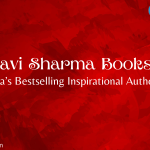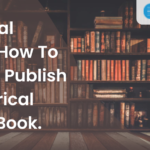Introduction to Mood in Literature
Have you ever felt a chill reading a spooky story or a warm glow while reading a heartwarming tale? That feeling is called mood, and it’s the secret ingredient authors use to pull readers into their worlds. In literature, mood refers to the author’s emotional setting that influences the reader’s feelings as they experience the story. It’s what colors the entire reading experience, making it memorable and immersive.
Mood is essential because it helps readers connect emotionally with the story. It sets the tone for how events unfold and can even guide the reader’s expectations and reactions. Without mood, a story might feel flat or dull, no matter how exciting the plot is.
You may also read: Top 10 Must-Read Aadvika Pommu Novels (ஆத்விகா பொம்மு)
Understanding Mood vs Tone vs Atmosphere
Before diving into mood examples, it’s helpful to clear up some common confusion. Mood, tone, and atmosphere are related but distinct elements in literature.
- Mood is the feeling the reader experiences; it’s emotional and internal.
- Tone is the author’s attitude toward the subject or audience; it’s often conveyed through word choice and style.
- Atmosphere refers to the external environment or setting’s feeling, which contributes to emotion.
Think of it like a movie: mood is how you feel watching it, tone is the director’s style, and atmosphere is the scenery and lighting.
Top 15 Mood Examples in Literature
1. Melancholy
Melancholy is a mood often used in literature to evoke a deep, reflective sadness. It captures feelings of longing, loss, and quiet sorrow without overwhelming despair. This mood helps create a contemplative atmosphere where characters and readers alike explore themes of nostalgia, regret, or unfulfilled desires. Classic works like Edgar Allan Poe’s poetry or the reflective tone in Jane Austen’s novels often use melancholy to deepen emotional complexity and enrich storytelling.
2. Suspense
Suspense generates a tight and uncomfortable atmosphere, keeping readers on edge and ready to find out what occurs next. It frequently features high stakes, uncertainty, and cliffhangers. Authors like Agatha Christie and Gillian Flynn brilliantly create suspense through pacing, foreshadowing, and untrustworthy narration. This tone propels plot momentum and emotional commitment, making readers feel as if they are discovering secrets with the protagonists.
You may also like: Diva Secret Cellular Nutrition Therapy by Dr. Wandoh Timothee Djimet: Book Summary
3. Joyful
Joyful moods in literature elicit feelings of elation, celebration, and lightheartedness. These scenes frequently use uplifting rhetoric, warm images, and nice settings to build emotional connection. Moments of social achievement and romantic fulfillment in Jane Austen’s Emma exude joy, contributing to character development and reader happiness. Joy magnifies themes such as love, achievement, and unity, providing respite and contrast in emotionally diverse stories.
4. Foreboding
Foreboding is a mood that signals impending doom or misfortune, creating a tense and uneasy atmosphere. Often used in thrillers, gothic novels, or dystopian fiction, it prepares readers for dark events. In Shakespeare’s Macbeth, ominous weather and prophetic witches build a strong sense of foreboding, foreshadowing tragedy. This emotion heightens suspense and engages readers by encouraging them to anticipate danger around every corner.
You may also read: Pacing Definition in Literature: Guide for Writers and Authors
5. Nostalgic
Nostalgic emotion in literature evokes a bittersweet longing for the past, often idealizing memories and lost innocence. It immerses readers in reflective emotions, prompting empathy and emotional resonance. Authors like Marcel Proust in In Search of Lost Time masterfully use nostalgia to explore memory and identity. This mood deepens character development and themes, creating emotional depth through evocative descriptions and recollections that blur time and present.
6. Romantic
Romantic mood in literature evokes feelings of love, passion, and emotional intimacy. It frequently features idealized relationships, emotional actions, and beautiful language that evokes the reader’s emotions.
This mood is common in romance novels and classic literature like Jane Austen’s Pride and Prejudice. By immersing readers in warmth and affection, the romantic emotion fosters connection and emotional investment in character relationships and outcomes.
You may also like: What is a Title Page? Definition, Purpose and Examples
7. Tragic
Tragic moods generate sentiments of sadness, despair, and unavoidable loss, emphasizing human frailty. It is frequently seen in traditional tragedies such as Shakespeare’s Hamlet, where fate and poor decisions have disastrous repercussions. This atmosphere heightens readers’ emotional engagement by presenting them with themes of death, failure, or hopelessness. Tragic stories frequently prompt thought on morality, destiny, and the fragility of life.
8. Hopeful
Hopeful mood in literature inspires optimism and a sense of possibility, even amidst hardship. It often emerges through characters who persist despite adversity or when the narrative hints at a brighter future. Classic examples include Anne in L.M. Montgomery’s Anne of Green Gables and Santiago in Hemingway’s The Old Man and the Sea. This emotion uplifts readers, reinforcing themes of resilience, redemption, or the enduring power of faith and dreams.
9. Dark and Gloomy
Dark and gloomy moods evoke feelings of despair, dread, or hopelessness, often created through shadowy settings, bleak imagery, or ominous tones. Gothic literature, like Mary Shelley’s Frankenstein or Emily Brontë’s Wuthering Heights, uses this mood to emphasize isolation and internal torment. This atmosphere immerses readers in emotional tension and foreshadows tragic events, making it essential for suspenseful or psychological storytelling.
You may also like: 10 Best Books on Writing Every Aspiring Author Should Read
You may also like: 20 Satire Examples in Real-World Every Writer Should Know
10. Whimsical
The whimsical mood creates a fun, eccentric, and imaginative ambiance, frequently combining fantasy with lightheartedness. It invites readers into a world where the ordinary becomes magical, as seen in Lewis Carroll’s Alice’s Adventures in Wonderland. This mood fuels curiosity and wonder, allowing writers to explore surreal ideas without heavy emotional stakes. Whimsical tones often rely on exaggerated characters, dreamlike settings, and humorous surprises to charm and enchant readers.
11. Mysterious
Mysterious mood evokes curiosity, suspense, and the sense that something is hidden or unknown. It often features shadowy settings, cryptic dialogue, or events that defy logical explanation. In literature like Daphne du Maurier’s Rebecca or Arthur Conan Doyle’s Sherlock Holmes stories, the mysterious mood keeps readers engaged by posing unanswered questions. This atmosphere heightens tension and encourages deeper engagement with the plot and characters.
12. Angry
Angry moods in literature heighten suspense, fuel conflict, and expose character flaws or injustice. This mood frequently occurs in response to betrayal, injustice, or frustration, infusing the narrative with hate or rage. In Emily Brontë’s Wuthering Heights, Heathcliff’s intense rage creates the novel’s dark and stormy emotion. Writers utilize furious moods to challenge readers emotionally and highlight topics such as retribution, power, and moral deterioration.
You may also read; What is the Ruler Archetype? Definition with Powerful Examples
13. Peaceful
Peaceful moods evoke tranquility, serenity, and emotional calm. Writers often create this mood through soft imagery, gentle pacing, and soothing descriptions of nature or quiet domestic scenes. In literature, works like Henry David Thoreau’s Walden use peaceful moods to reflect introspection and harmony with the natural world. This atmosphere helps readers pause, reflect, and experience a sense of inner stillness alongside the characters.
14. Anxious
An anxious mood creates tension and unease, often mirroring a character’s internal dread or uncertainty about looming events. It heightens suspense and keeps readers emotionally invested. For example, in George Orwell’s 1984, the ever-present threat of Big Brother cultivates a constant state of anxiety. Authors use pacing, fragmented thoughts, and unsettling imagery to immerse readers in characters’ fears and amplify the narrative’s emotional stakes.
You may also like: What is New Adult Fiction? Everything You Need to Know
15. Eerie
Eerie moods inspire feelings of dread, mystery, and apprehension, frequently implying that something unusual or uncomfortable is about to occur. It’s frequently used in gothic and horror literature. In Shirley Jackson’s The Haunting of Hill House, for example, the deteriorating mansion and inexplicable happenings create an unsettling atmosphere that puts readers on edge. This tone heightens suspense and enhances psychological strain throughout the story.
How Mood Shapes a Story’s Impact
Mood is the emotional glue that keeps a story together. It pulls readers in, makes them care about the characters, and drives the emotional punch of key scenes. When mood aligns with theme and plot, the story becomes more powerful and memorable.
Mood also guides how readers interpret events. A scene described with a gloomy emotion feels very different from the same scene written with a hopeful tone. This emotional steering shapes the reader’s overall experience and connection.
Techniques Authors Use to Establish Mood
Authors don’t just declare moods they build them carefully through:
- Word Choice and Diction: Using words that evoke specific emotions (e.g., “gloomy,” “radiant”).
- Setting and Description: Dark forests or bright sunlit meadows set different moods.
- Dialogue and Character Reactions: How characters speak and respond shapes mood.
- Pacing and Sentence Structure: Fast, choppy sentences can create suspense; long, flowing sentences can feel peaceful.
You may also like: 10 Tips on How to Build a Fanbase of Readers
Tips for Writers: Crafting Mood in Your Own Stories
Want to nail the mood in your writing? Try these tips:
- Know Your Desired Mood First: Decide what feeling you want to evoke.
- Use Sensory Details: Engage sight, sound, smell, touch, and taste to create atmosphere.
- Be Consistent but Flexible: Keep mood steady but allow it to evolve with the story.
- Experiment with Contrast: Use shifts in mood to surprise readers and deepen impact.
Conclusion
Mood is more than just a sensation in the background; it is the driving force behind storytelling. From melancholy to whimsical, the proper mood can elevate your story from mere words on a page to a memorable emotional journey. Understanding and mastering mood allows readers and writers to have richer, deeper literary experiences.
Frequently Asked Questions
Mood is how the reader feels, while tone is the author’s attitude or approach to the subject.
Look for emotional clues in descriptions, word choice, and character reactions.
Absolutely! Many stories shift moods to reflect changes in plot or character emotions.
Mood helps readers connect emotionally, making stories more engaging and memorable.
Through changes in setting, pacing, word choice, and character behavior.
















